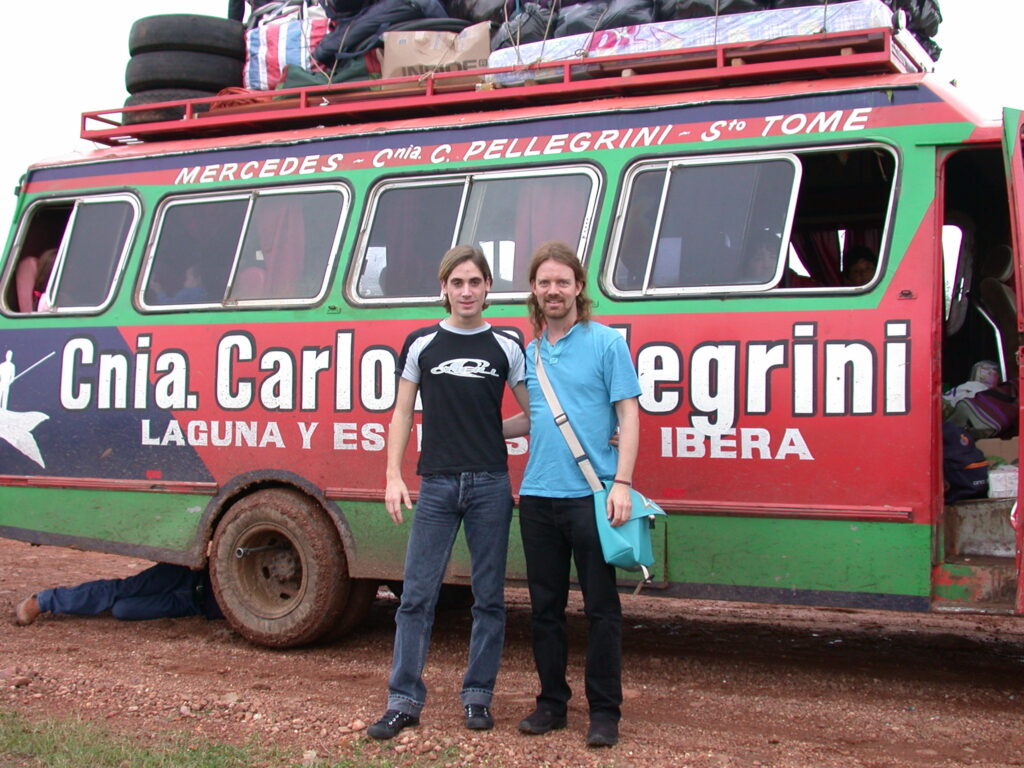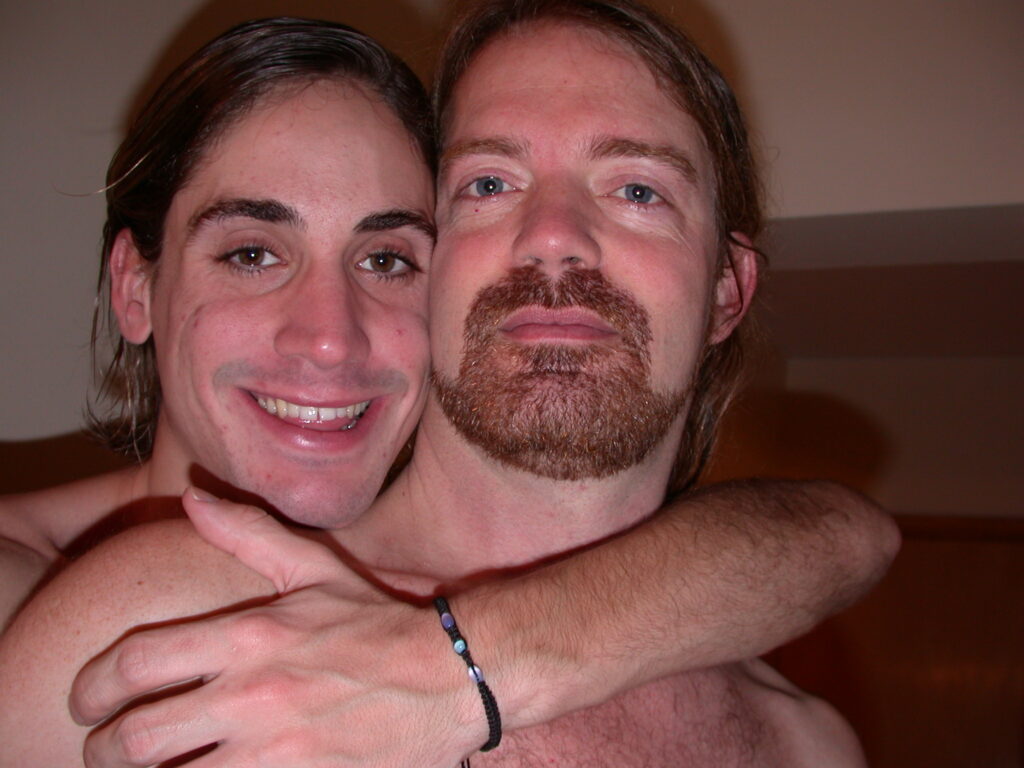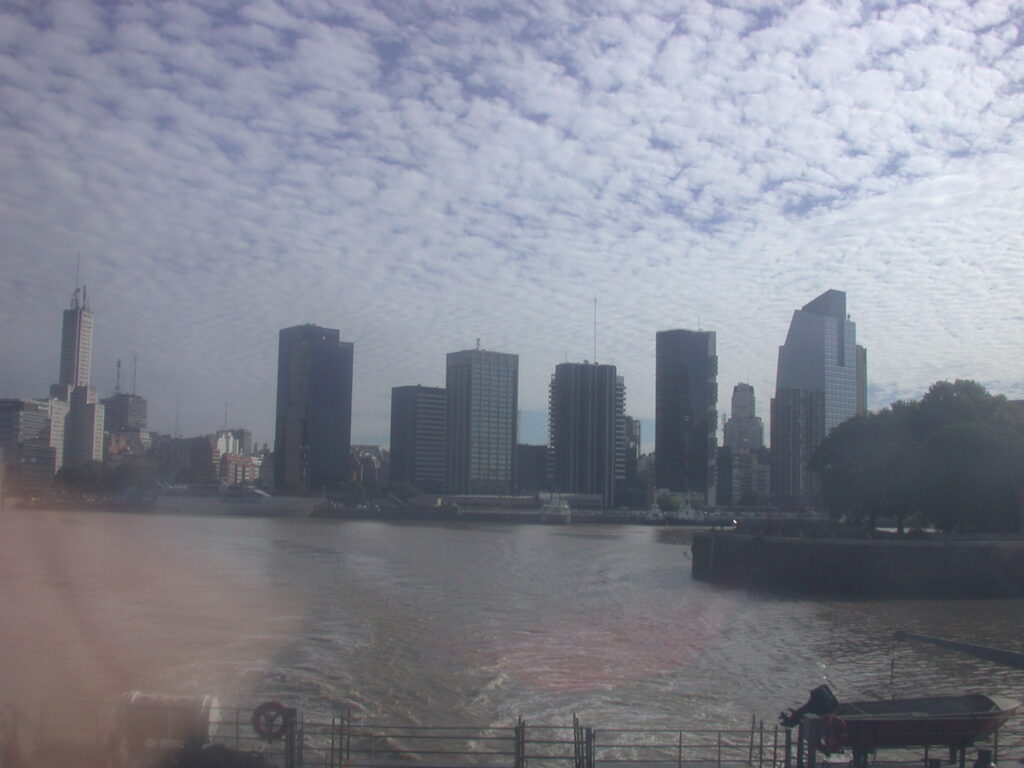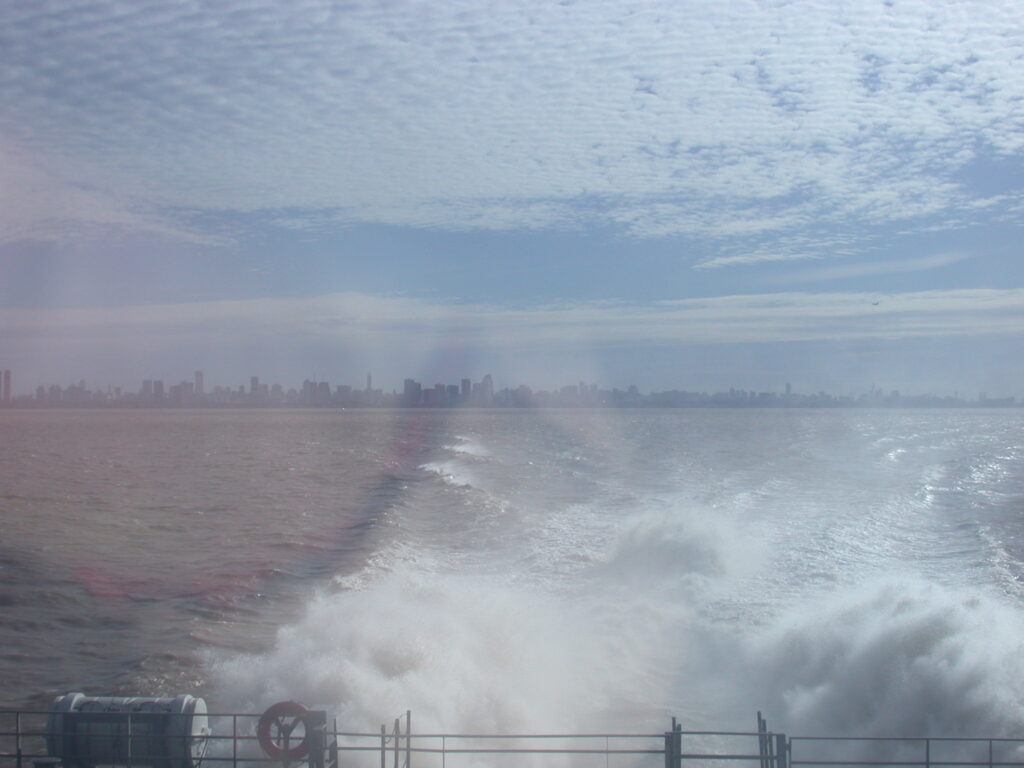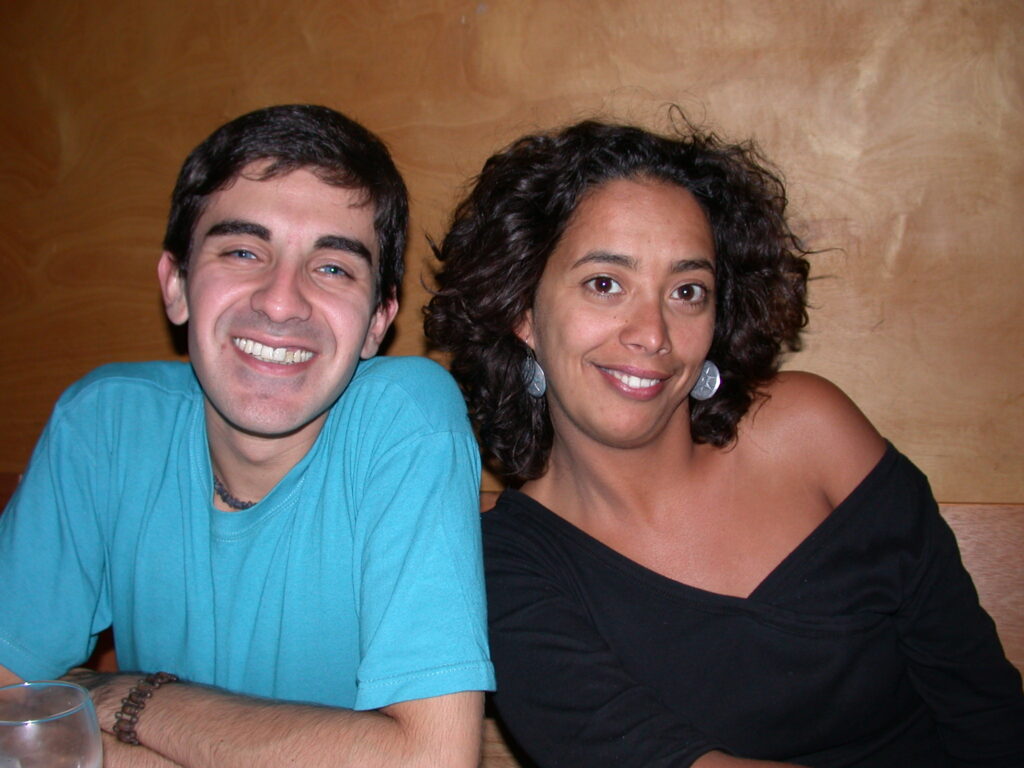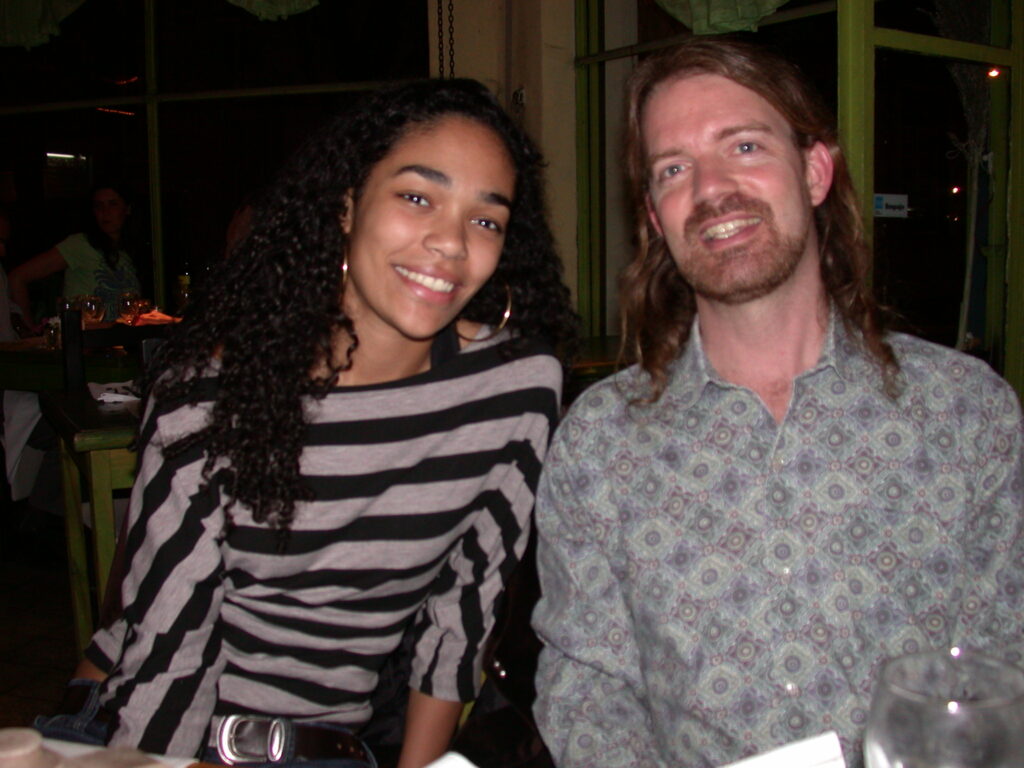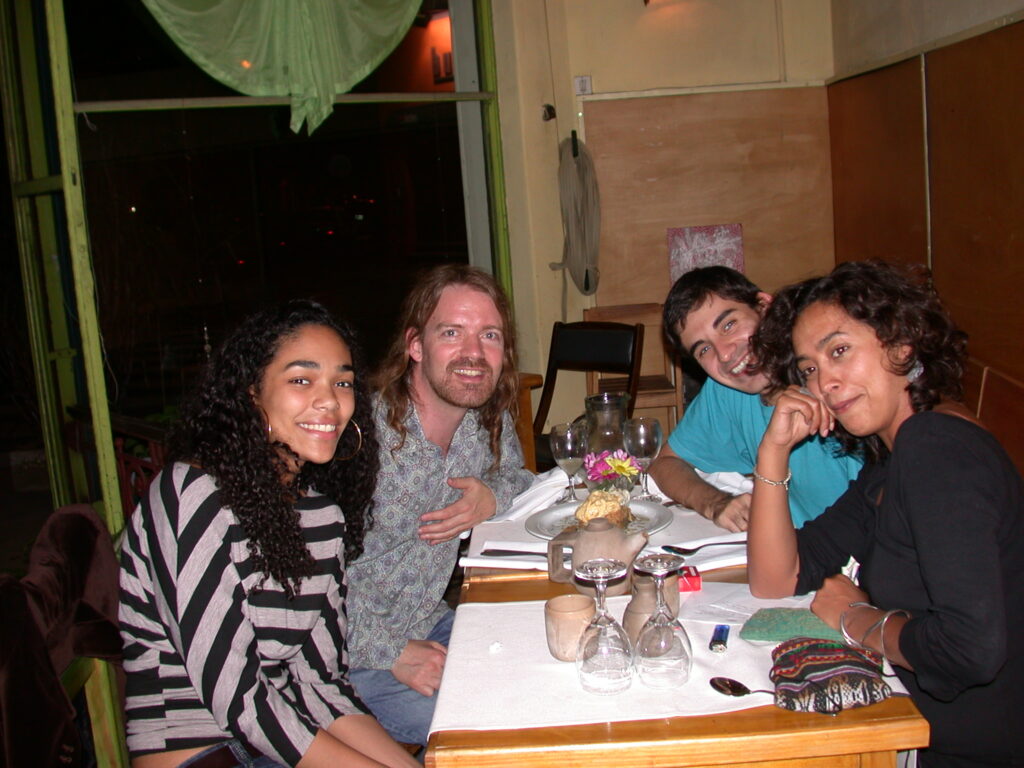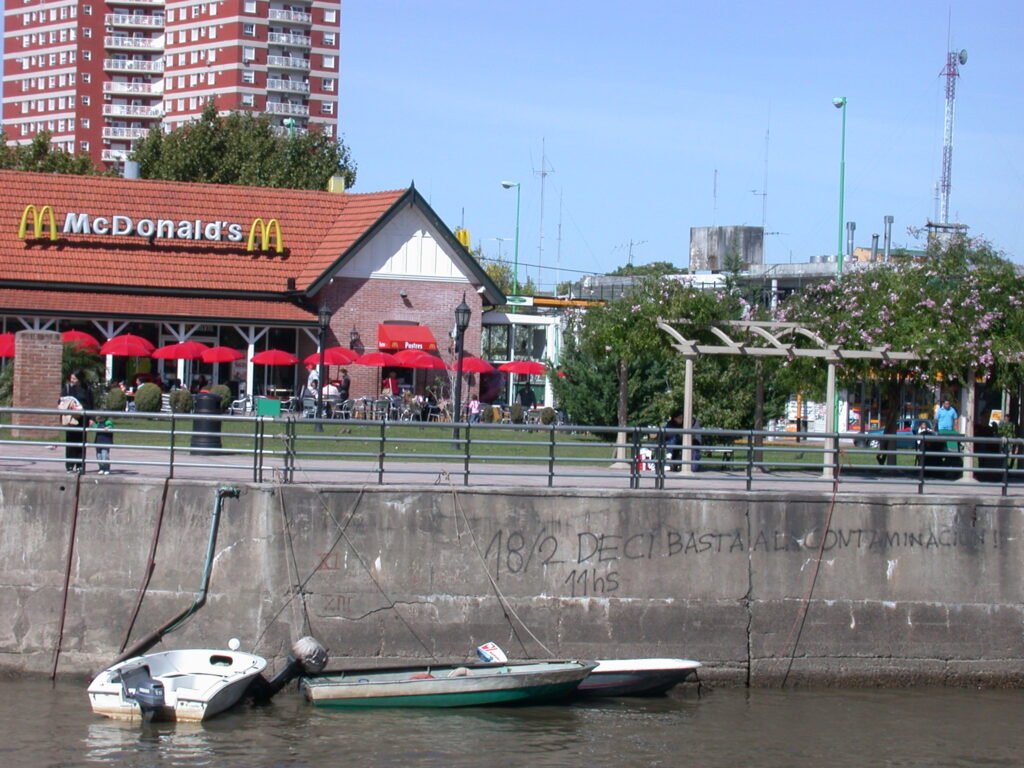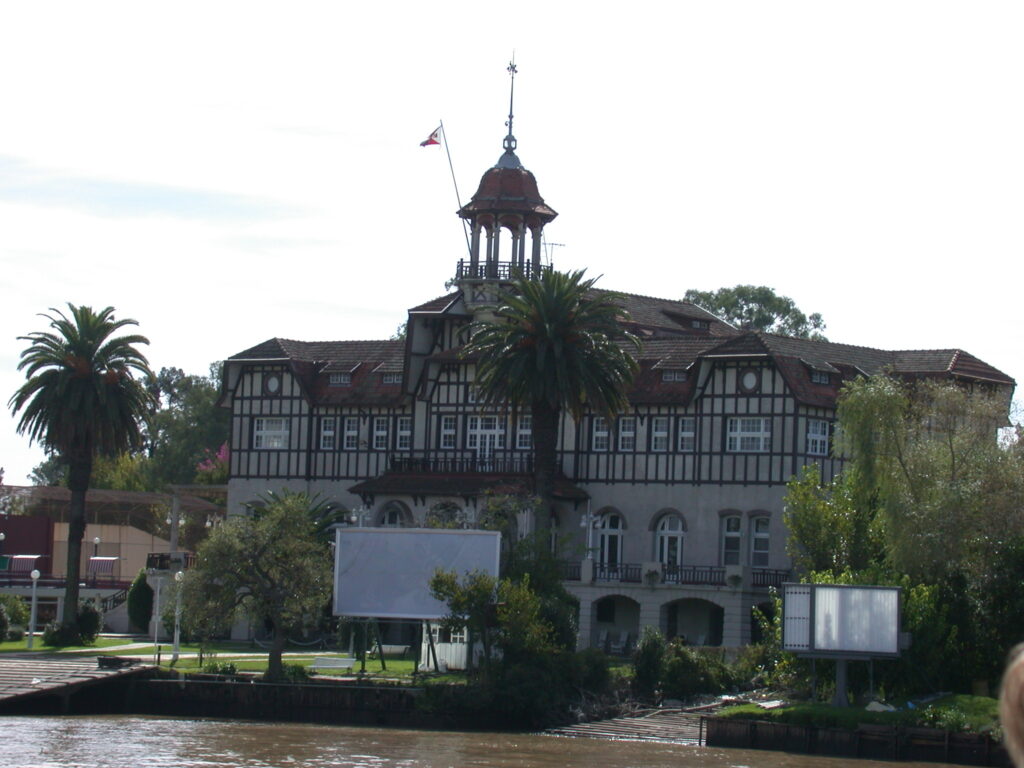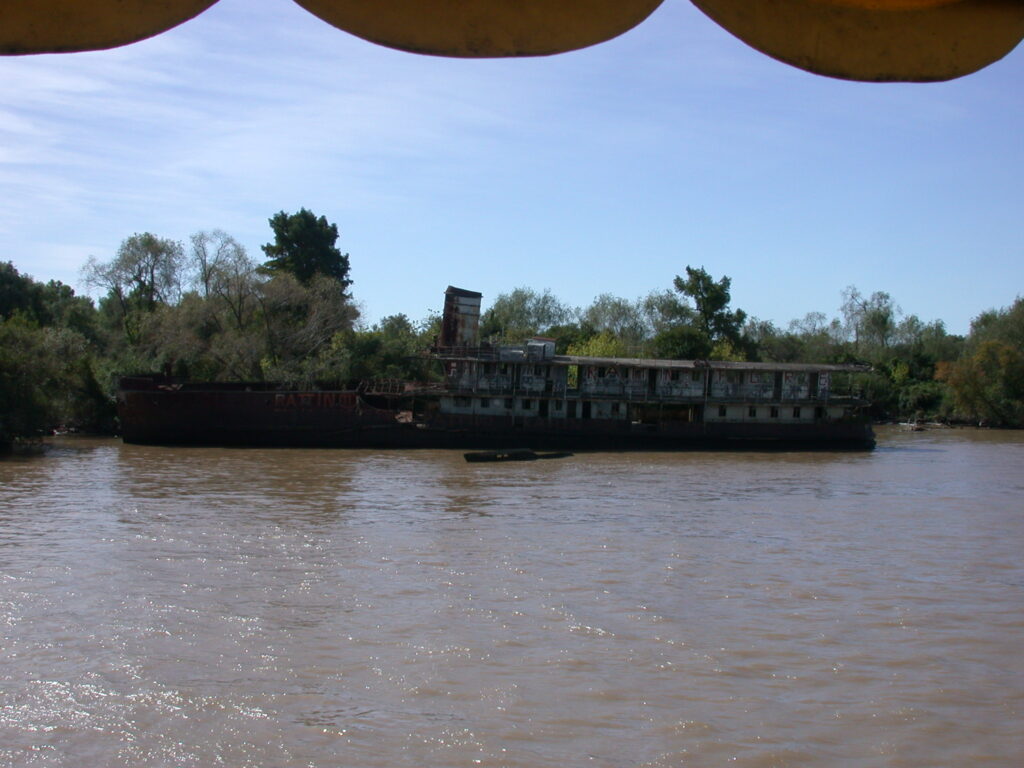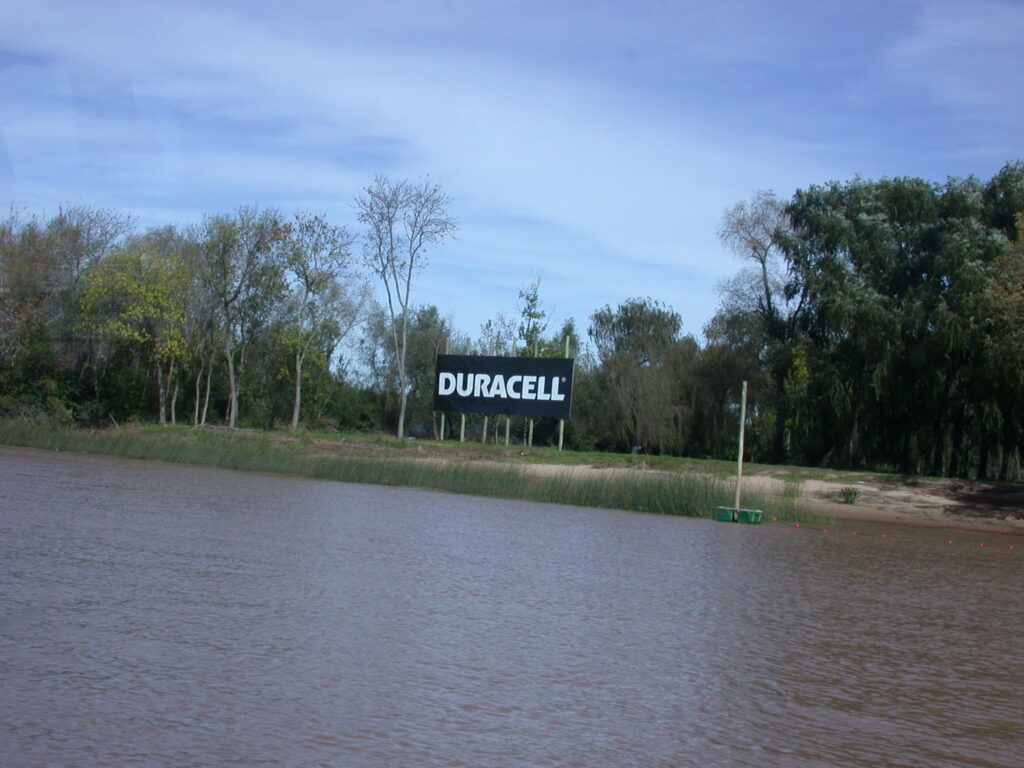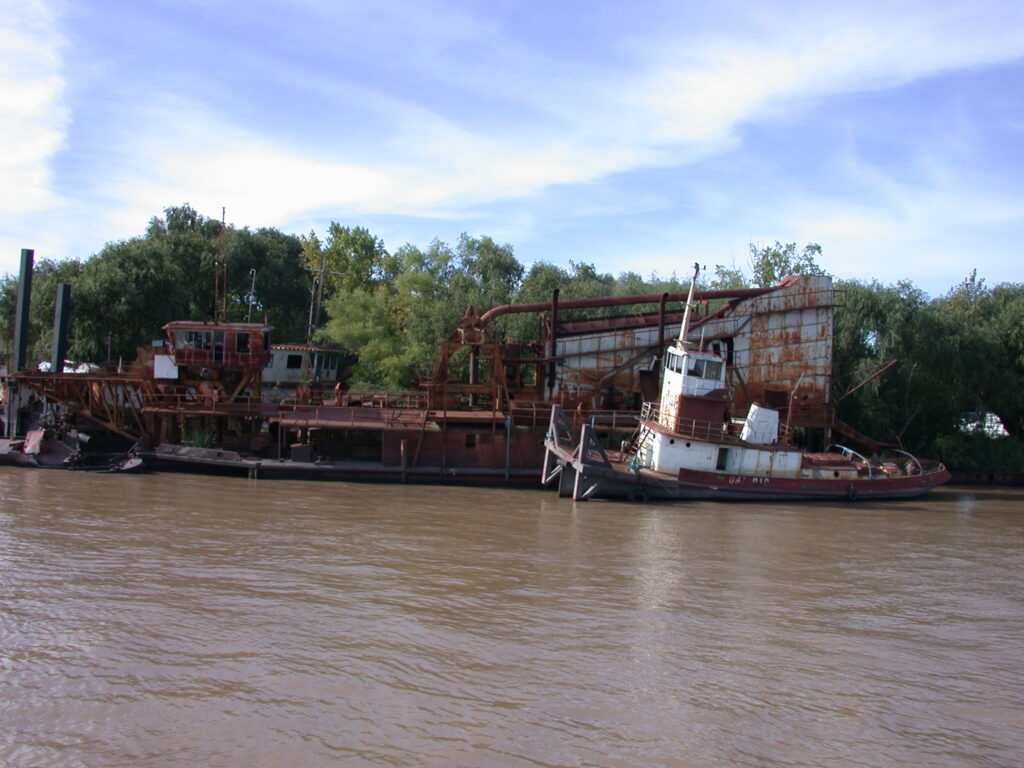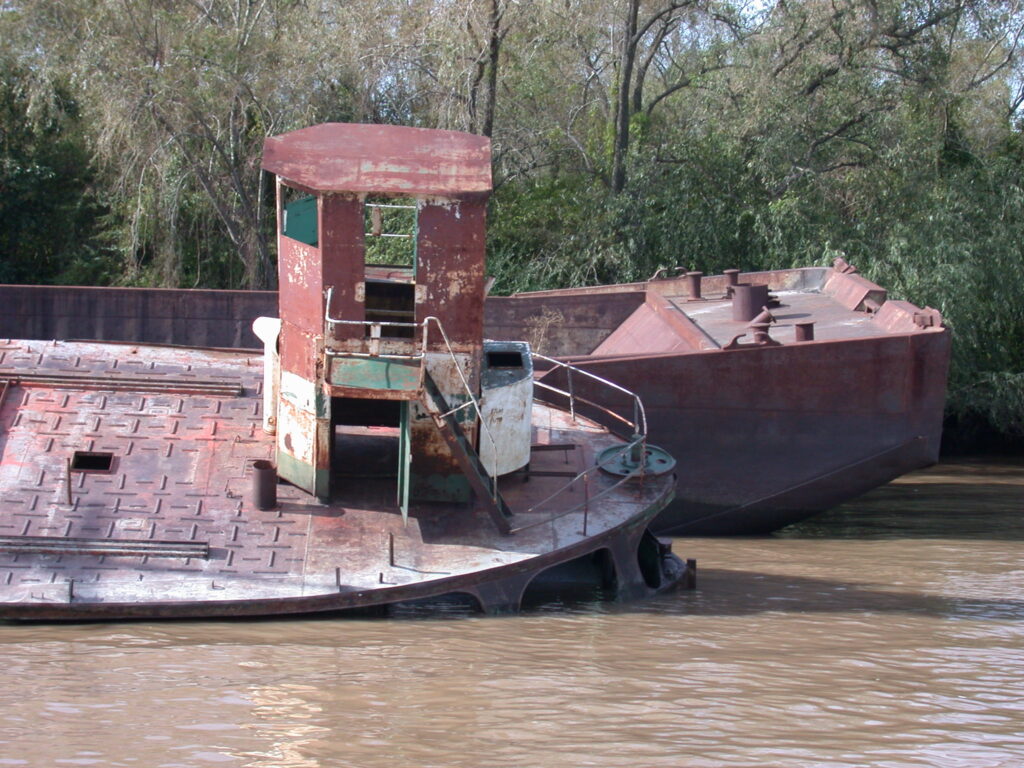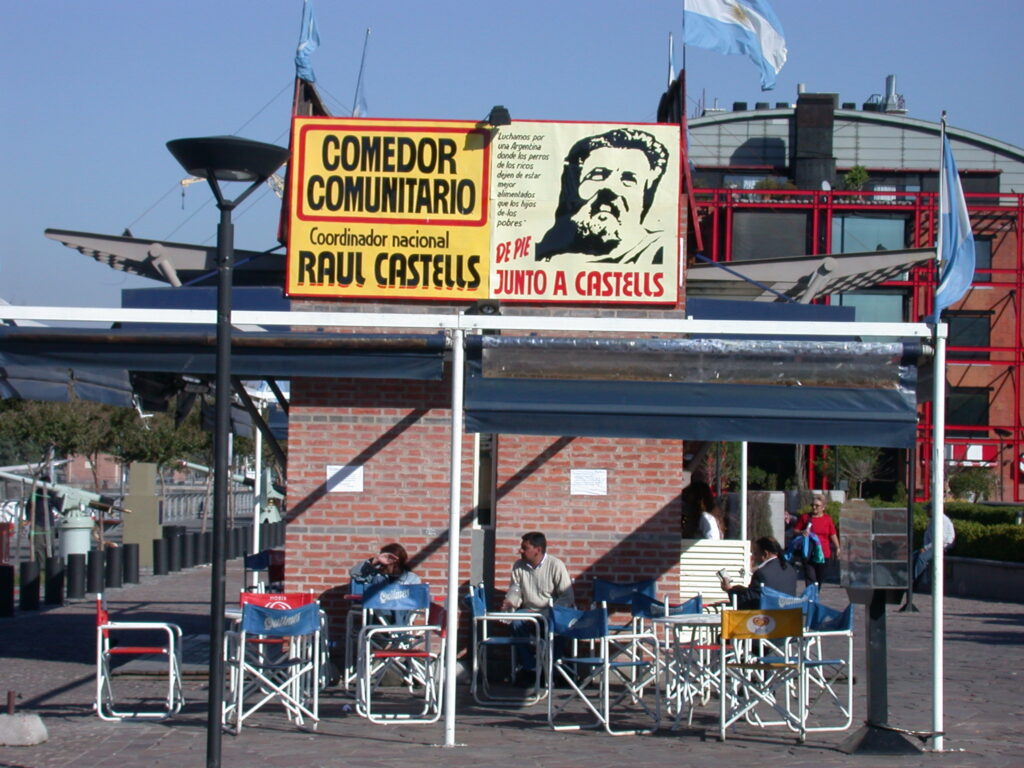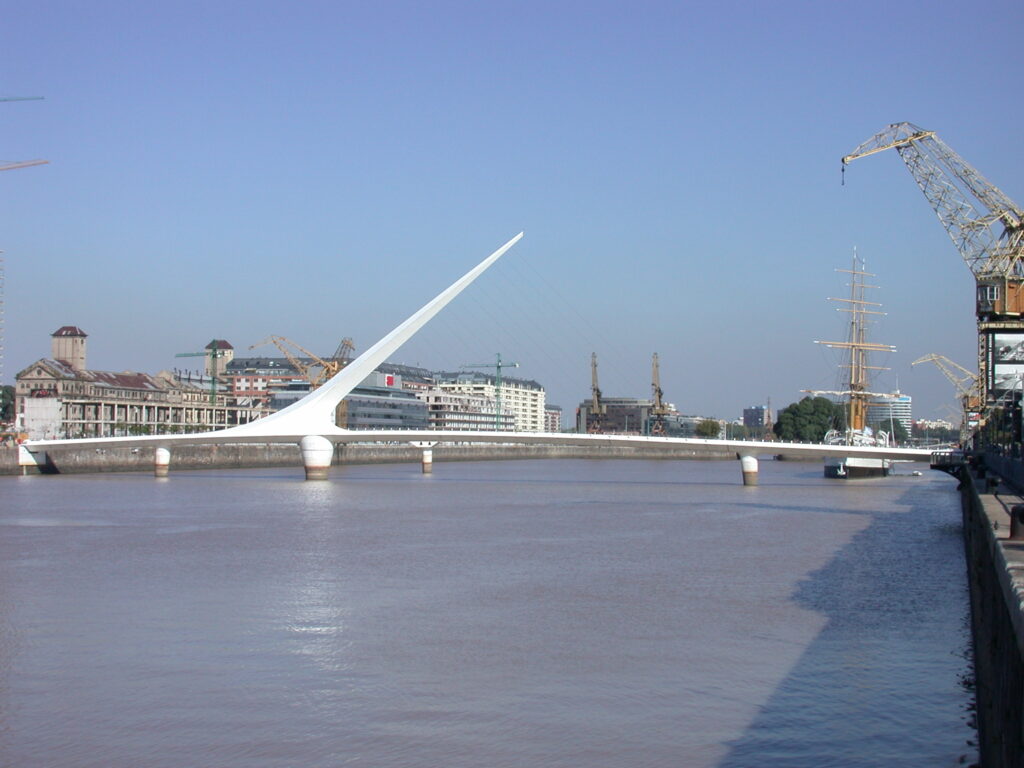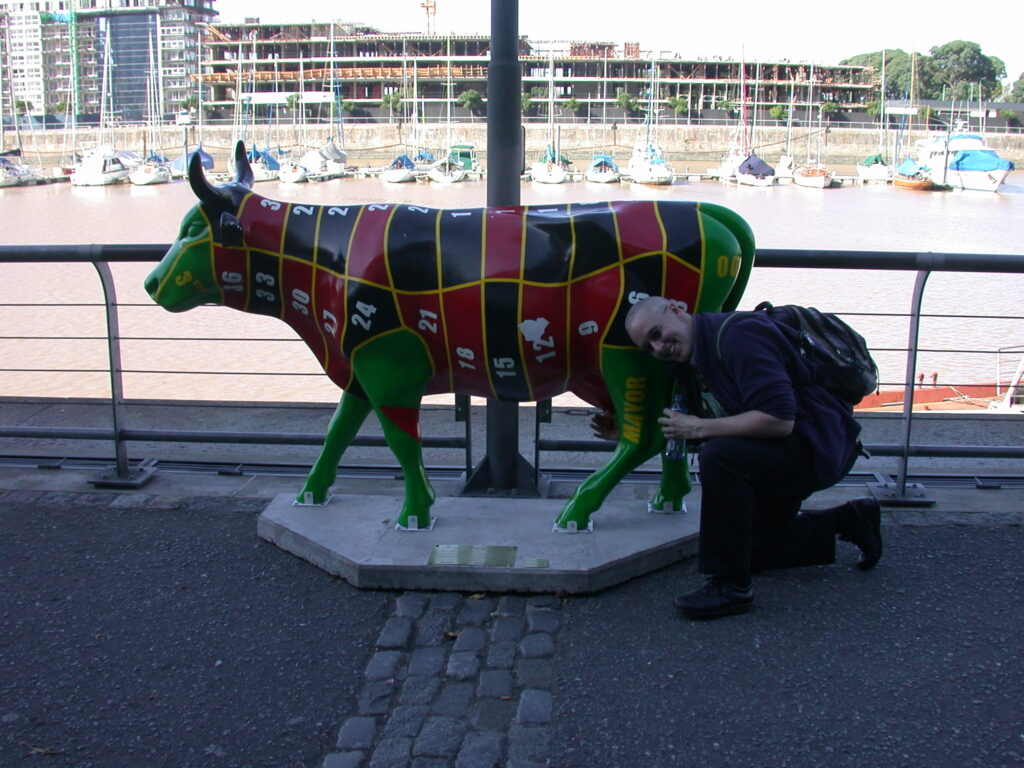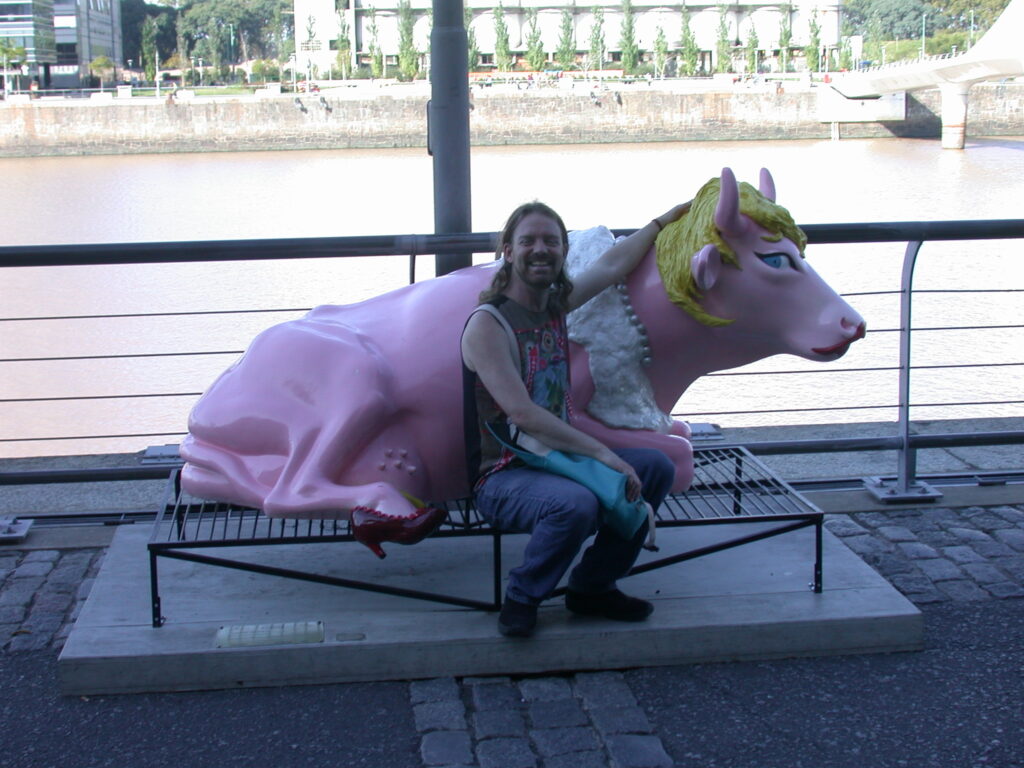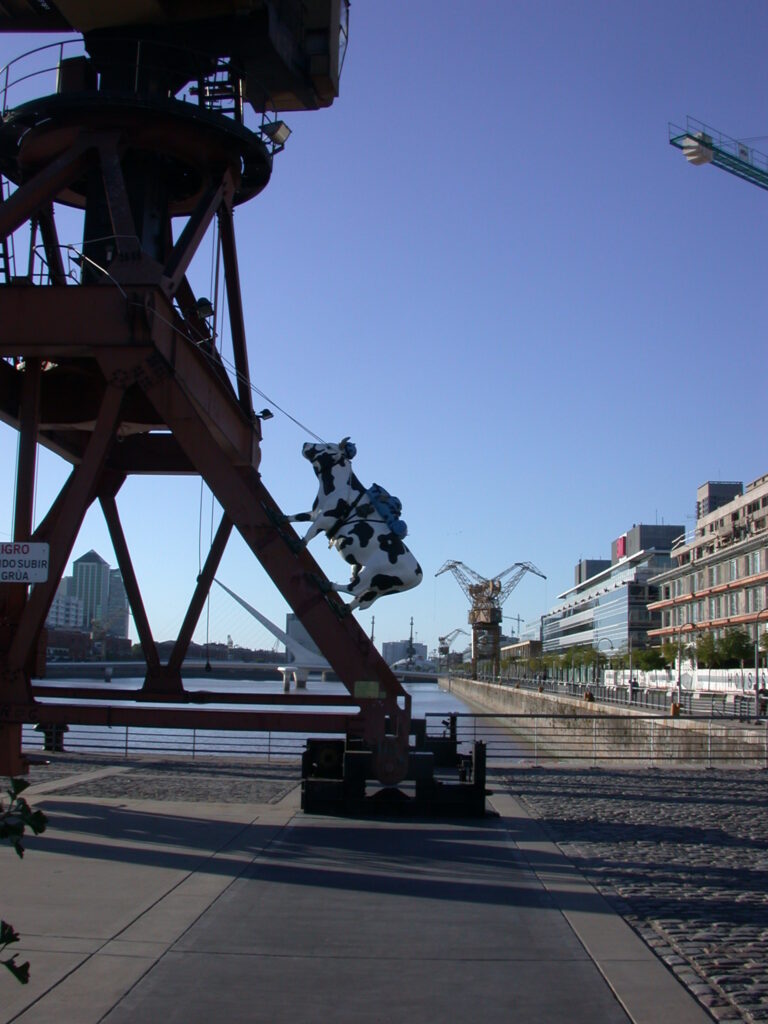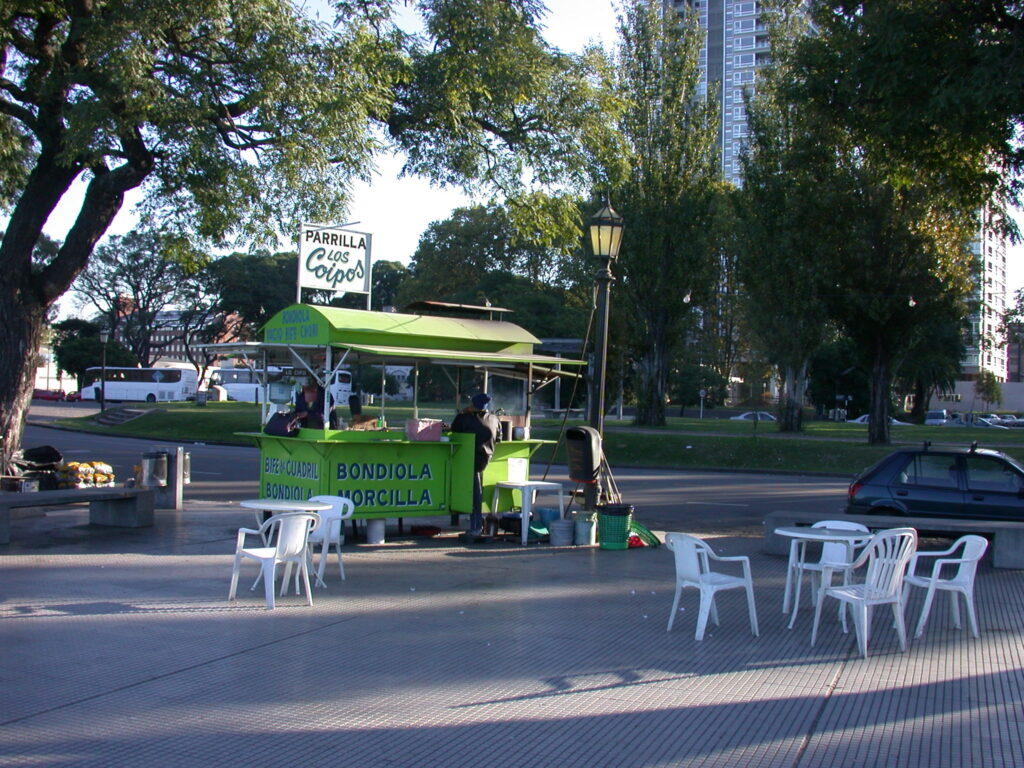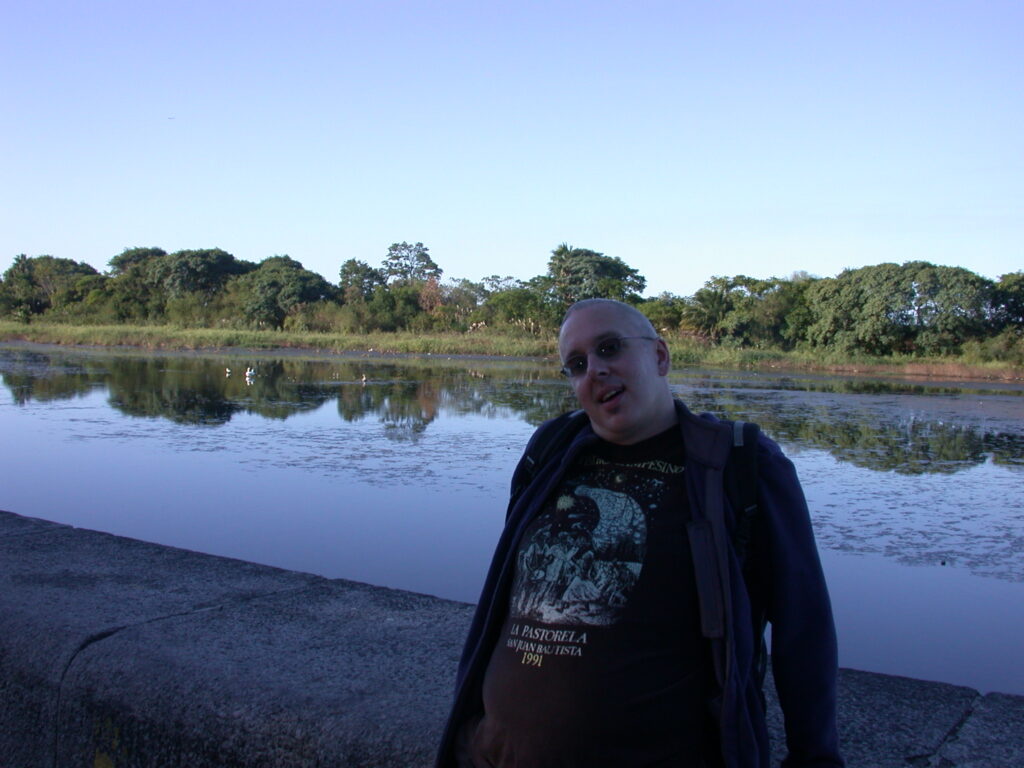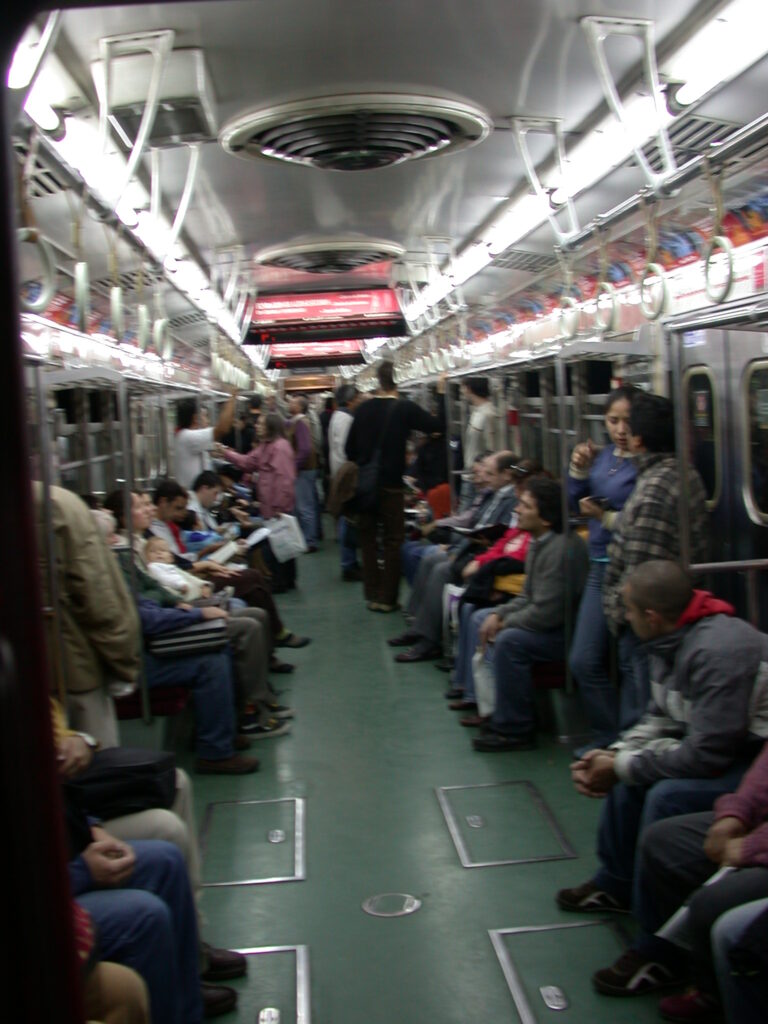We woke up at 8:00am to take a “lancha” (boat) on the lagoon to see all the animals and plant life. The carpinchos and caimanes (alligators) live with endangered species of deer and hundreds of species of birds on remarkable floating islands called embalsados. We saw (and photographed) all kinds of animals, but my favorite is still the carpincho. Guille preferred the caimanes, and I have to admit that the newly hatched alligator babies were very cute.
Our guide Emilio explained that the male (macho) carpinchos have a gland in their foreheads which secretes a substance they use to mark their territory. The strongest macho carpinchos apparently have a harem of several female carpinchos that are only accessible to other male carpinchos when the strongest macho is sleeping. I asked Emilio what the other carpinchos did when not sneaking time with the female carpinchos and he suggested that some of them probably spent time together.
Everyone at the hotel seems comfortable with Guille and my relationship which, although only a week old has blossomed. We did have a moment of confusion when we first arrived about our request for a “matrimonial” bed. The hotel manager asked if we were married and we both answered yes, although I couldn’t help laughing about it.
I decided I should write a children’s story about life on the embalsados.
After the boat ride, wwe took a siesta in our room, then we walked over the bridge to the “interpretation center” and two paths in the ecological reserve: the monkey path and the little hill path. We saw several monkeys and trees with hanging plants, but the mosquitos were intolerable so we didn’t stay for long. The other path wasn’t very interesting. We ran into the Spanish tourist from the bus.
We returned to the Ypa Sapukai posada and took a siesta along with some maté, using the maté tea, the maté cup made from a calabasa pumpkin gourd, the thermos, and the matera bag we used to hold it all, that we had purchased in Montevideo. The hotel staff prepared us vegetarian tortillas (like omelettes) for dinner and three new guests joined us at the hotel (we had the entire place to ourselves up to that point): a guy from Portland, Oregon, and two guys from Slovakia (Milo and Peter).
We were most happy to meet Milo and Peter because they also were seeking a way to head north from Colonia Pelligrini rather than taking the long way around to the falls at Iguazu with the broken-down bus back to Mercedes. We saved a bunch of cash by splitting the cost of the 4×4 vehicle rather than paying it all ourselves.

